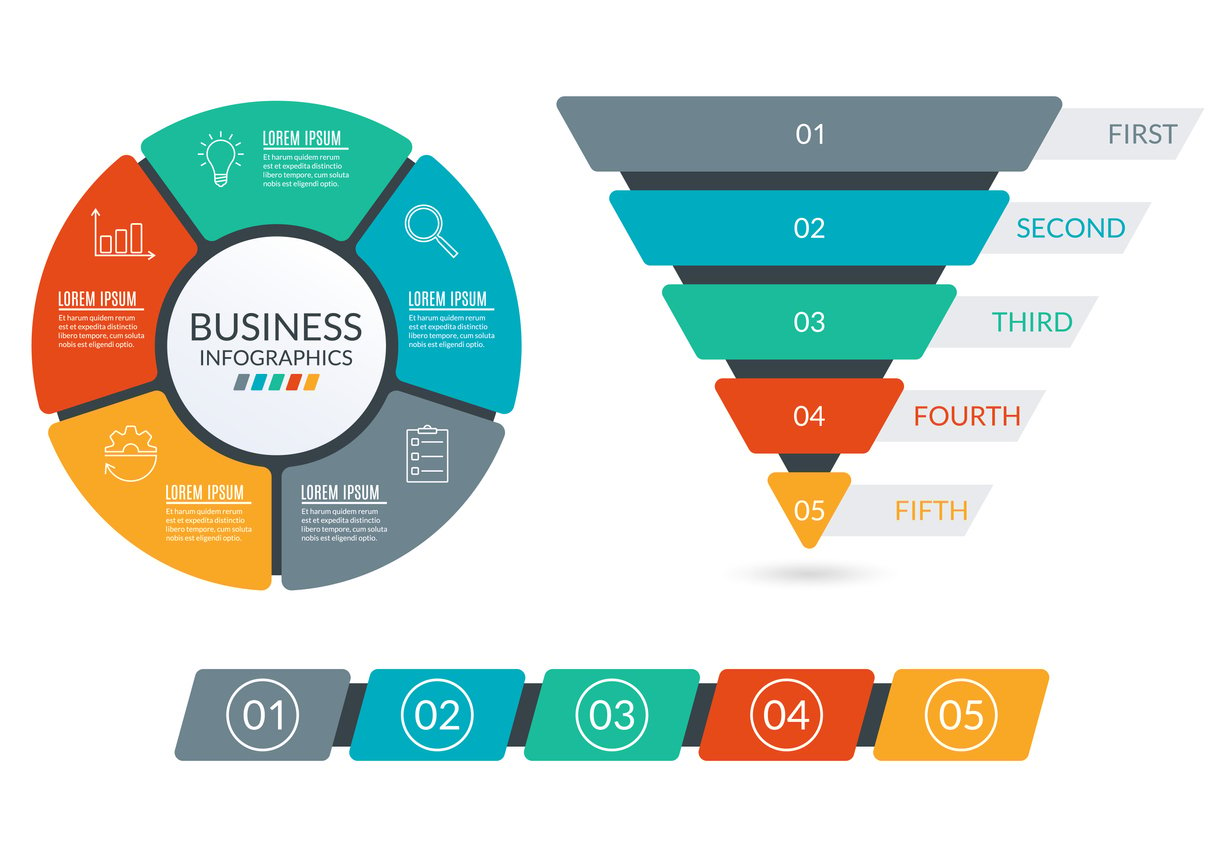
4 Practical Sales Prospecting Techniques for Sales Professionals
 Updated on
Updated on
 By Carlos Correa
By Carlos Correa
Carlos Correa
Carlos has been involved in the sales space for well over ten years. He began in the insurance space as an individual sales agent, managing teams as s...
learn more
Carlos Correa
Carlos has been involved in the sales space for well over ten years. He began in the insurance space as an individual sales agent, managing teams as s...
Table of Contents
Table of Contents
So you've finally reached that moment, haven't you?
You've been in sales long enough to sharpen your skills and bring them to a point where they're a match for the best in the industry.
But you're still not closing as many deals as you want, and now you know it's not about the quality of your performance. It's about the quality of your prospects.
Because while you're trying to sweet-talk companies you have no chance with, your competitors are scooping the cream of the crop.
That's why you need to get better at prospecting, and fast, or you'll get left behind.
Fortunately for you, you've come to the right place to begin your journey to the next level.
What is Sales Prospecting?
Sales prospecting is the process of identifying and reaching out to potential customers (a.k.a prospects) who may be interested in your product or service.
Think of it as mining for gold, but instead of pickaxes and pans, you're armed with LinkedIn, email templates, and possibly way too much coffee.
The key to an effective salesperson is the ability to target the right people. To find a target-rich environment. You wouldn't expect a farmer to deliver a great crop yield on barren land, would you?
That's right.
Now let's clarify the prospecting meaning in sales compared to similar-sounding (but different) terms like lead generation and lead qualification—because yes, they are all part of the sales process prospecting journey, but no, they are not the same.
- Prospecting in sales is about actively searching for potential buyers. This could mean researching companies, scanning social media for decision-makers, or picking up the phone and cold calling. It's outbound and intentional. You're the one making the first move here.
- Lead generation, on the other hand, is about attracting people to come to you. Think webinars, ebooks, newsletter sign-ups—basically, your marketing team throws out bait, and you reel in the fish. It's typically inbound.
- Lead qualification happens once you've got a lead (via prospecting or lead gen). This is the detective work: Is this lead a good fit? Do they have the budget, authority, need, and timeline (BANT)? It's how you separate hot leads from time-wasters.
In other words, sales prospecting is the first, and arguably most crucial, step in building a strong pipeline. Without it, your pipeline dries up faster than a sales rep's coffee mug on demo day.
Sales Prospecting Process Explained

There are a number of steps every salesperson needs to take if they want sales prospecting to deliver the desired results. There's no way around these steps.
So here's what that particular staircase might look like:
1. Identify Your Ideal Customer Profile (ICP)
Research has found that 50% of sales prospects are bad leads, and if you can bring that number down, you'll be saving yourself a lot of time. So, how do you do it?
Before you start dialing or emailing, know who you're looking for. Your ICP defines the companies or individuals most likely to benefit from your product or service. Look at:
- Industry and company size
- Job title or decision-maker role
- Budget range
- Pain points and business goals
- Geography, if relevant
You can also use your existing customers as a benchmark. Who are your happiest clients? Who renews, refers, and raves? Build your ICP around them. This foundational step will help you avoid chasing unqualified leads and allow you to focus on prospecting sales leads that are worth your time.
2. Build a Lead List or use a CRM (e.g., Ringy)
Once your ICP is defined, it's time to build your lead list. This is the who's who of your potential future customers. You can do this manually through platforms like LinkedIn or ZoomInfo, or let a CRM help you scale.
For example, Ringy, our very user-friendly CRM, lets you organize, track, and automate your sales prospecting process without feeling like you need a Ph.D. in sales ops.
Ringy makes it easy to:
- Import contacts
- Segment by ICP criteria
- Track communication history
- Automate follow-ups and reminders
Not only does this save time, but it also reduces the risk of letting hot leads slip through the cracks. According to Spotio, 94% of sales teams using automation tools like CRMs increase productivity in sales and achieve higher win rates. So don't just work hard—work smart.
3. Research Prospects
Now that you've got a list, don't just start pitching. Take the time to research each contact. This step is the difference between a generic cold email and a tailored message that actually gets a reply.
Here's what to look for when prospecting sales leads:
- Job role and responsibilities
- Company news and recent milestones
- Shared connections or mutual interests
- Pain points tied to their industry or department
The goal here is relevance. Personalized outreach gets results: emails with tailored subject lines are 26% more likely to be opened. So, whether you're prospecting for sales via email, phone, or social media, a little homework goes a long way.
4. Make First Contact
You've done the prep, now it's go time. Making the first move can be daunting, but remember: you're offering value, not interrupting their day.
The first contact might come in the form of:
- A personalized cold email
- A connection request and follow-up on LinkedIn
- A phone call with a well-researched opener
- Even a thoughtful voicemail
Use your research to make the message relevant and your tone human. The key to good sales prospecting techniques here is to keep it short, specific, and centered on them, not you. Frame the message around a pain point they likely have and how your solution can help.
Bonus tip: If you're using Ringy, you can automate multi-channel outreach while still keeping that personal touch. Smart and scalable.
5. Follow Up and Qualify
Here's the truth: most deals aren't won on the first touch. In fact, 80% of sales require 5 follow-ups after the initial contact. So if you're giving up after one email, you're leaving money on the table.
Follow-up is where the rubber meets the road in the sales prospecting process. Use this phase to:
- Re-engage the prospect
- Uncover their needs
- Ask qualifying questions (BANT, MEDDIC, or your own framework)
- Gauge interest and readiness
Qualifying is about fit, not just interest. A lead may love your pitch, but if they don't have the budget or authority to buy, it's better to find out early.
Right!
So, use your CRM (yep, Ringy again!) to track who's responding, who's opening, and who's ghosting. This will help you prioritize your time and keep your pipeline healthy.
6. Be Consistent
Here's the part most reps skip—and why their pipeline starts looking like a tumbleweed convention. Consistency in sales prospecting is everything.
Set daily or weekly prospecting goals:
- 30 new contacts added
- 10 cold calls made
- 3 LinkedIn messages sent
- 5 follow-ups logged
Track your efforts and keep refining your message based on what's working. Top-performing sales reps spend an average of 5 hours per week on prospecting. They treat it like the gym—you don't see results after one session, but stick with it, and the gains are real.
Consistency builds momentum, confidence, and a full pipeline. So block off time, eliminate distractions, and commit. Your future self (and your sales manager) will thank you.
Sales Prospecting Methods and Techniques
There's no one-size-fits-all approach to sales prospecting, and that's actually good news. The best sales teams mix and match strategies depending on the product, market, and audience.
Some methods involve rolling up your sleeves and hitting the phones, while others are about establishing credibility online or face-to-face. In this section, we'll break down key sales prospecting methods and the practical sales prospecting techniques that support them.
Let's start with the big picture: how and where you can connect with potential leads.
Sales Prospecting Methods

While the channels may evolve, the core sales prospecting methods fall into three primary categories: traditional outreach, online engagement, and in-person networking. Here's a quick breakdown of each method and why it matters.
|
Method |
Description |
Key Benefit |
|
Traditional |
Classic techniques like cold calling and cold emailing still reign supreme in many industries. Armed with online research, sales reps can tailor pitches to each prospect's pain points. |
Direct, fast, and scalable. Still highly effective when personalized and backed by strong research. |
|
Online |
Platforms like LinkedIn, Facebook groups, Reddit, and Quora offer goldmines of niche communities. B2B buyers are especially active on LinkedIn, making it a hotspot for prospecting in sales. |
Builds familiarity and authority before first contact. Encourages organic engagement and trust. |
|
In-Person |
Industry events, conferences, and meetups provide rich opportunities for face-to-face networking. In fact, research shows that 80% of prospects are more receptive to new products at events, largely because the in-person setting builds a greater sense of trust and credibility. |
Personal rapport, trust-building, and informal qualification—all in one. Adds credibility and increases the likelihood of a warm reception in future follow-ups. |
Sales Prospecting Techniques
Once you've picked your methods, the next step is using the right sales prospecting techniques to execute them effectively.
These aren't just tips, they're your sales survival toolkit. Let's look at some of the sales prospecting techniques that consistently help reps break through the noise.
1. Cold Calling

Yes, we know, all sales reps hate cold calling. But that doesn't mean it isn't useful.
Mastering cold calling is a great way to find new prospects and send them down the sales funnel.
But you have to go about it in a way that separates you from the competition.
Researching the prospect is a good way for you to personalize your pitch. But it has to go beyond the research of the company, you have to do a deep dive into the decision-makers themselves.
Have they made a keynote speech at a conference recently? Make sure to mention it.
Have they recently succeeded in some endeavor? Congratulate them.
And on it goes. Any personal tidbit might also go a long way to make your pitch more effective.
2. Use Automation Tools
Don't be a hero. Life should be as easy as you can make it.
Sales automation software, yes, like Ringy, are lifesavers for sales reps managing a large pool of potential prospects, each of whom is in a different stage of the sales process.
Automation tools will help you stay on top of every lead and give you an overview of the entire process so you always know what the next step will be for every prospect.
3. Become a Thought Leader
This is one of our favorites. It's one thing to demonstrate your expertise once you get on the phone with a prospect, but it's something else entirely if the prospect is aware of your expertise long before they get on the phone with you.
Being an industry thought leader means you social-proof yourself to the hilt. It means that out of all the shady sales reps who may or may not know what they're talking about, your qualifications and integrity are beyond reproach.
It's a lovely feeling.
So, whether it's written content for blogs, attending industry round-tables, or having a Twitter Ask Me Anything, make sure to get yourself out there and have your voice be heard.
4. Use Referrals
Getting in the door by having a happy previous customer open it for you is always the right way to go.
But people can often hesitate to ask for referrals. Maybe it seems self-serving. Maybe sales reps aren't used to asking customers for favors since they prefer to be the ones handing them out.
But you need to get over all of that. Ask for the referral and enjoy the benefit of free advertising to the fullest. Sometimes, all you need to do is ask.
Types of Sales Prospecting Services
There are different types of services that can help companies improve the effectiveness of their prospecting. Some are standalone services, while others can work in combination.
Here's a breakdown of the most common types of sales prospecting solutions available today, and how each can level up your game:
|
Service Type |
What It Does |
Best For |
|
CRM-Integrated Prospecting Tools |
These tools, such as Ringy, Zoho, and Salesforce combine outreach, lead tracking, call logging, and contact management in one system. |
Sales teams that want seamless prospecting within their CRM ecosystem. |
|
Lead Generation Agencies |
Some of the big names here include Martal Group, Belkins, and CIENCE, which are outsourced sales prospecting providers that deliver targeted lead lists or book qualified appointments. |
Companies are looking to scale fast without hiring in-house SDRs. |
|
Email Automation Platforms |
With email automation platforms like Ringy, Mailshake, and Lemlist, you can automate and personalize email sequences at scale, track open/reply rates, and A/B test messages. |
Reps who want to optimize cold email outreach and save time on follow-ups. |
|
Sales Intelligence Platforms |
Provide enriched contact data, company insights, and ideal customer profile (ICP) targeting filters. Some good examples include Cognism, Zoominfo, and Clearbit. |
Prospecting teams focused on hyper-targeted lead sourcing and account-based marketing (ABM). |
|
Outbound Sales-as-a-Service |
These are end-to-end providers that handle outreach, SDR activities, and handoff to AEs. This is fully outsourced outbound prospecting—includes email, cold calls, LinkedIn, and lead qualification. |
Startups or growing companies that want full-cycle prospecting done for them. |
Sales Prospecting Best Practices

Successful sales prospecting doesn't just happen, it's built on consistency, strategy, and the right mindset.
So, here are four key sales prospecting tips to help you prospect smarter—not just harder:
1. Set Aside Time to Prospect
Prospecting isn't something you squeeze in between meetings. It deserves a dedicated spot on your calendar every day. Many sales reps get stuck in reactive mode, spending time on deals already in motion and neglecting the top of the funnel. That's a costly mistake.
SalesRabbit's research suggests that high-performing reps spend up to 30-40% of their week prospecting. That dedicated time fuels the next month's pipeline.
Even 60–90 minutes of focused daily prospecting can snowball into significant pipeline growth. Put it on your calendar. Guard it. Prospect with purpose.
2. Act Like a Consultant
The best reps aren't pushy, they're partners. They don't just pitch; they diagnose. Approaching sales prospecting like a consultant shifts the entire conversation from "What can I sell you?" to "How can I help solve your biggest business pain?"
That mindset means doing your homework before reaching out: understanding the industry, the competitive landscape, and what challenges the company might be facing. Use LinkedIn, earnings calls, case studies, whatever it takes, to dig into the prospect's world.
When you show prospects that you understand their problems better than they do, that's when your value becomes undeniable. And it makes you stand out in a sea of generic outreach.
3. Use Technology to Your Advantage
Let's be honest. Managing leads manually is a fast track to burnout (or forgotten follow-ups). That's where technology becomes your best friend.
Modern sales prospecting tools like Ringy, Apollo, or Salesloft help you automate repetitive tasks, track touchpoints, schedule follow-ups, and even enrich lead data. This gives you more time to focus on the human side of sales: building relationships.
Even basic integrations, like syncing your CRM system with email or auto-logging calls, can boost efficiency. The result? Less admin, more selling. Tech doesn't replace you; it amplifies you.
Don't treat automation as cheating, it's how top sales teams stay sharp and scalable.
4. Build Social Media into Your Routine
Your digital footprint can do a lot of heavy lifting in the sales prospecting process—if you let it.
Posting insights on LinkedIn, commenting on industry trends, or even just updating your profile with real thought leadership can position you as someone worth listening to. And when you eventually reach out to prospects, there's a good chance they'll recognize your name or even remember that useful post you shared last week.
Social proof builds trust. And trust lowers resistance.
B2B buyers are increasingly researching vendors before they ever respond or consider making a purchase. Having an active, value-driven social and online presence warms up your cold outreach—sometimes without you saying a word.
Sales Prospectors Need a Boost
If you have learned anything in this article, it is that sales prospecting is a challenge even for the best of salespeople, and there are a lot of tools and techniques out there to help make the process easier.
Sales prospecting is not going anywhere. It will be as relevant tomorrow as it is today. Sales reps need the assistance technology can provide them, if for no other reason than because their competition is certain to take advantage of it.
A CRM like Ringy can offer sales reps numerous tools that will streamline their sales prospecting process and take their effectiveness to the next level.
So steel yourself, take the leap, and contact Ringy today to discover how you can make your sales prospecting process better than ever!

Skyrocket your sales with the CRM that does it all.
Calling? Check. SMS? Check. Automation and AI? Check. Effortlessly keep in touch with your customers and boost your revenue without limits.

Take your sales to new heights with Ringy.
Sales in a slump? Ringy gives you the tools and flexibility you need to capture leads, engage with them, and turn them into customers.
Subscribe to Our Blog
Enter your email to get the latest updates sent straight to your inbox!
Categories
Related Articles



































































































